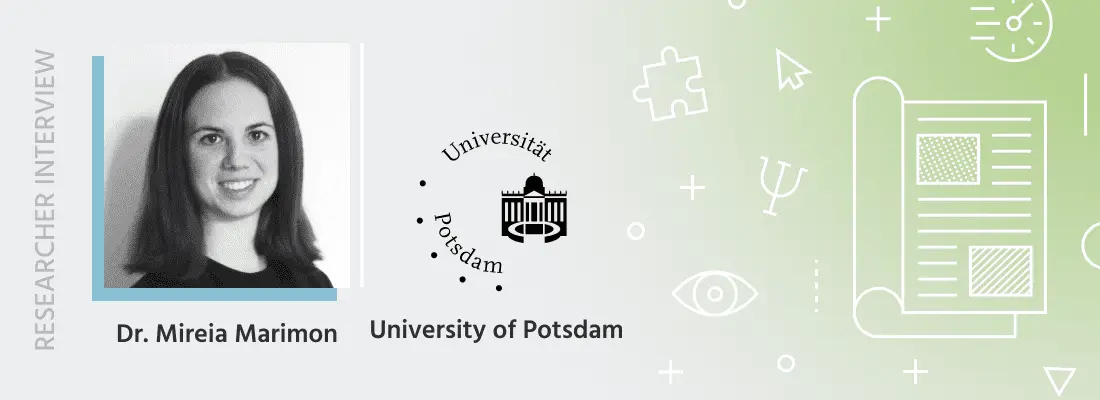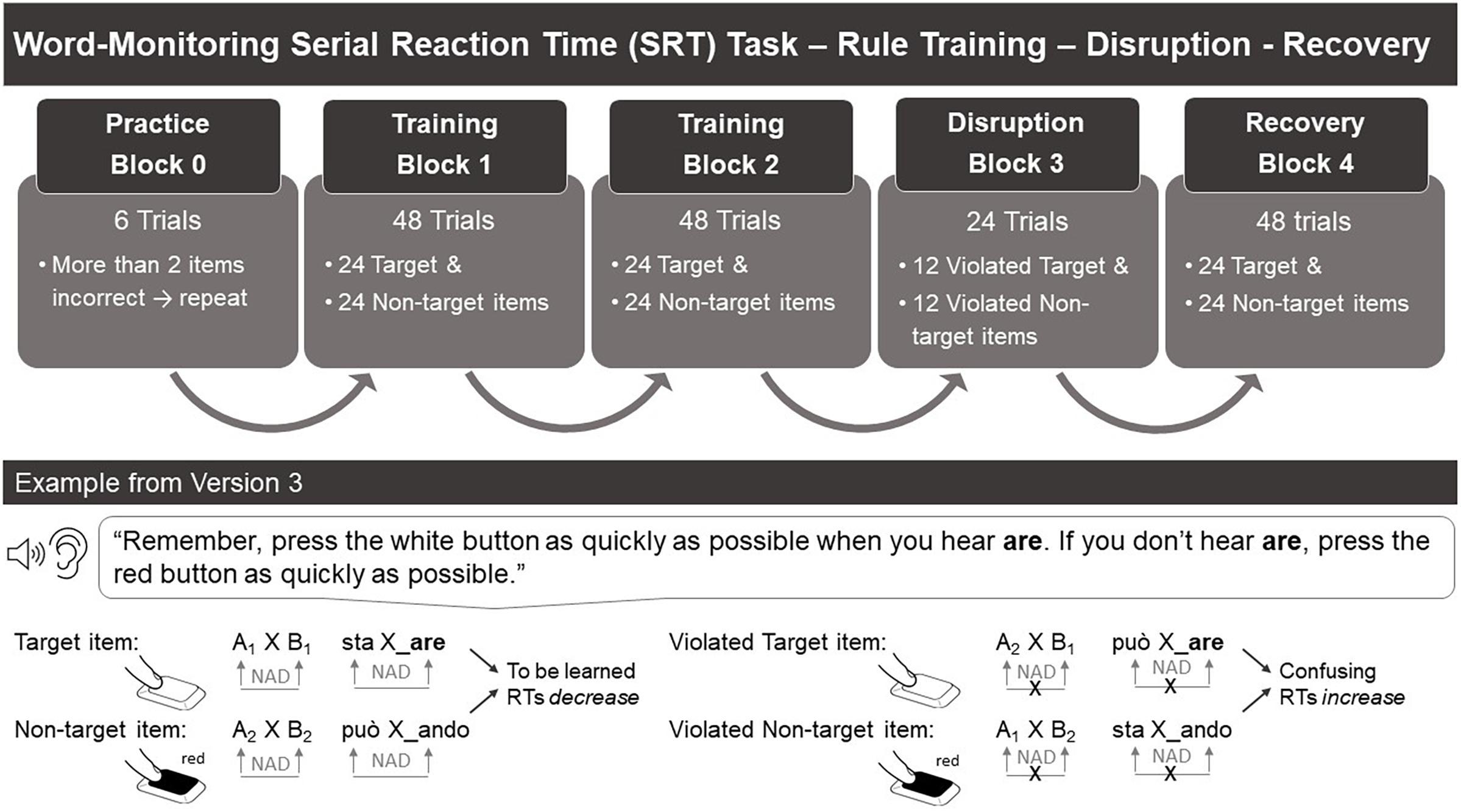
Children’s Learning of Non-adjacent Dependencies Using a Web-Based Computer Game Setting
Researcher: Dr. Mireia Marimon, University of Potsdam
Motivated by her interest in children and language learning, post-doctoral researcher Dr. Mireia Marimon conducted a multi-modal study in which children played a fun game designed to measure how they would learn the rules of a new language. View her paper in Frontiers in Psychology and read on to see how she used Labvanced to accomplish her goals.
Tell us about your research background and your field of study.
I work in the department of linguistics, specifically in psycholinguistics, at the University of Potsdam in Germany. We are studying the neurocognition of language and early language development in babies and children learning German as their first language. I also look at the mechanisms for learning new words and grammar in a language.
What motivated you to look into this area?
I completed my Master’s thesis as a research assistant at the Infant Research Lab in Barcelona and found the work to be very exciting. I learned the methods and specifics of working with infants and wanted to continue this research.
What is your recent paper about?
In this recent publication on learning grammatical rules, we tested children ages 4-8 online using Labvanced. Because the experiment is fairly long (15-20 minutes), we designed it as a game so that the children would not be bored. The game features 2 moles named Mali and Max (inspired by a popular German cartoon) that the children must catch in order to earn a star. The mole is caught when the child gives a correct answer.
Can you please describe the research design? What was the game measuring?
There were online and offline measures. Through the online measures, we could see how children were learning across the trials. In the offline task, we explored if the children had learnt and if they could apply that to a different task.
The game measured the children’s reaction times when choosing an ending for a sentence in Italian following a training phase on these sentence endings. The child was asked to press a left or right button to make a response. At some point, the pattern of stimuli was changed to an ungrammatical sentence, after which we expected them to make more errors and be slower. After a recovery phase, they completed a two-alternative forced choice task.

… **Fig. 1:** The study design for Dr. Marimon's language learning experiment.
Tell us about your conclusion and the implications of that.
For this study, we came up with a theoretical conclusion and a practical conclusion.
Theoretically, we concluded that children in this age range learn grammatical rules implicitly and actively through listening and pressing buttons as responses.
Practically, we concluded that online studies can work quite well if you collect enough data. They even work for sensitive measures such as reaction time and are good for testing children at home. You can achieve a larger sample size and do not have to bring children into the lab.
What are your next steps with this research?
There is a lot of variability in 3-4 year olds and we did not observe them as they performed the study, so some aspects were left uncontrolled. We would like to explore the variability between individuals and see exactly how the children are performing the task by repeating the study in a controlled lab setting. We are partnering with another institution who is performing the same task, as well as recording MRI data on the participants.
In what ways is conducting research online different from in-lab?
Online research can give us bigger sample sizes, which means more statistical power. This is a key part of infant research and something that should be looked for in this field. It is also very useful in terms of piloting, especially with adults. We have also seen studies that show that online data is just as reliable as data collected from in-lab studies.
However, there are some things that we cannot get away with doing online, like EEG research. Things that are not just behavioral responses still need to be done in person.
I believe that a combination of online and in-person is the best method.
How did you choose Labvanced for your research and what stands out to you about this platform?
We had checked out several platforms before choosing Labvanced. There was a discussion among researchers about which platform was the best, and it had been recommended to us because it was easy and did not require coding. This is an advantage especially for linguists, not having to program anything using code. Labvanced is easy to get on pretty quickly and easy to use. More complex tasks take longer to build, but once you know the platform, you don’t need to code.
We also chose Labvanced because of the lab license feature. Our whole group could work on the study together. After trying a few platforms, we decided Labvanced would work best for us.
What would you recommend to students hoping to begin research in your field?
Find someone who you look up to, someone who is where you want to be in 5 years. Get as much experience and advice as you can get from that person, and see if they or someone similar can be your mentor for guidance and support. It’s good to have support for any issue, professional or personal.
Motivation is also a key component. Read a lot, see what is interesting to you, because your research topic should excite you.
Finally, collaboration is one of the most important things. Peer and higher level colleagues look for input from people and also give their input. Once you learn something, give further by teaching other students and colleagues.
Do you have a message to share with other Labvanced users?
Find what works for your learning style. If you are more visual, watch the YouTube tutorials; if you like to read, go look at the text documentation. If you like to just start a project, open the platform and play with it, then check the documentation if you get stuck. Grab one of the templates from the library and try to reproduce it, understand how and why that study was done. That’s the starting point, it’s clear and helps you get going.